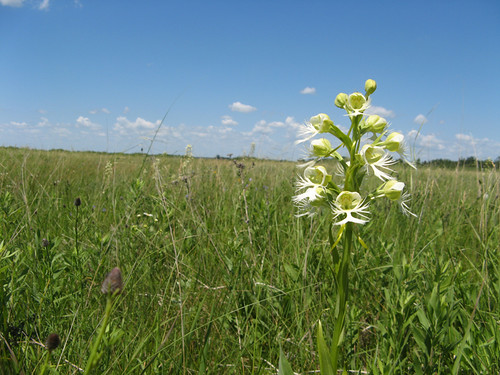
My family and I enjoy natural scavenger hunts. When we explore the landscape surrounding our Norman County farm, we teach each other about the birds, animals and plants we see. It’s fun to search for native wildflowers. It’s even more fun to spot something rare.
Recently, through a school project for my son, we learned about Minnesota’s many wild orchids. Our state is home to 43 different orchids. Who knew?
We learned Minnesota is the only state with an orchid as its state flower. We also learned we live in close proximity to suitable habitat for a very special wildflower – the western prairie fringed orchid. We’re planning to search for this unique flower this summer.
This week, we celebrate National Wildflower Week as a way to share our interest and to increase public awareness for wildflowers in the landscape, including the fringed orchid.
The fringed orchid has flowers on a stalk, or raceme. The stalks grow two to four feet tall, boasting up to 40 white flowers about an inch long. The flower’s lower lip has three lobes that fan out and are delicately fringed.
The fringed orchid is federally listed as threatened and in Minnesota as endangered because of loss of habitat. The orchid prefers to grow on higher, drier slopes of moist swales in full sunlight. Even though these treasures enjoy the sun, they do not flower in dry areas or during times of drought. They are pollinated primarily by hawk moths.
The fringed orchid’s prime habitat in Minnesota is in Glacial Ridge, the nation’s largest prairie wetland restoration project. The project area located in northwestern Minnesota is more than 24,000 acres.
USDA’s Natural Resources Conservation Service (NRCS) has worked with private landowners to restore native vegetation and wetlands through conservation programs since the 1990s. Much of the land was enrolled into easements through the former Wetlands Reserve Program, now the Agricultural Conservation Easement Program. In this program, private landowners voluntarily choose to restore wetlands on their land.
The Nature Conservancy purchased the land in 2000 and cooperatively worked with NRCS and more than 30 partnering groups to restore the land to prairie wetland habitat.
In 2004, Glacial Ridge was designated a national wildlife refuge. Glacial Ridge now provides habitat for numerous prairie wildlife and threatened prairie plants like the fringed orchid.
I’m excited for my family’s upcoming expedition to Glacial Ridge. Why not conduct a natural scavenger hunt of your own by identifying as many wildflowers as you can? Happy hunting!
